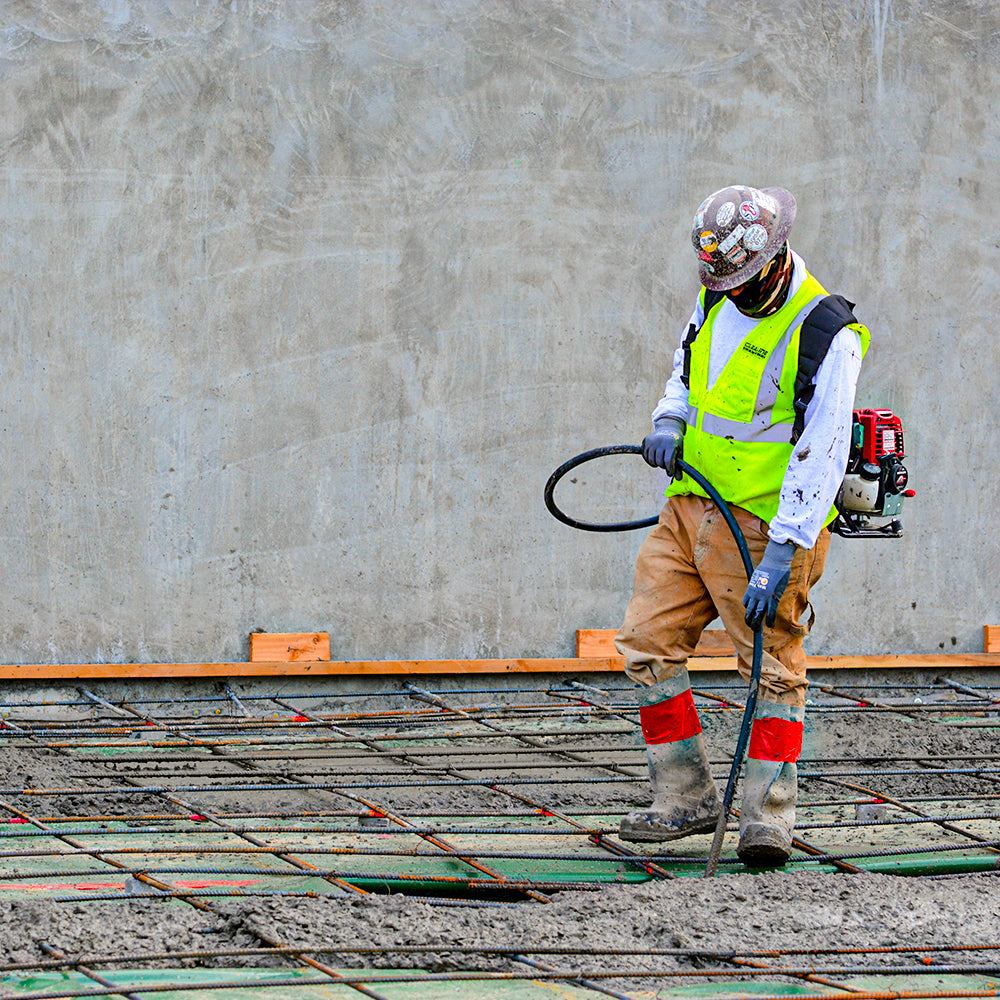In the realm of concrete construction, achieving the perfect concrete mix is more than just pouring and waiting. The science behind concrete consolidation involves a delicate balance of materials and techniques to ensure the final structure's strength and durability. Concrete vibrator backpacks, often considered as tools of agitation, play a crucial role in perfecting this science. In this blog, we delve into the intricacies of how concrete vibrator backpacks work and their scientific significance in the art of concrete consolidation.
1. The Role of Agitation in Concrete
Agitation is the process of physically disturbing a concrete mix to eliminate air voids and ensure uniform distribution of ingredients. While mixing is essential for blending materials, agitation focuses on eliminating entrapped air, water pockets, and ensuring that the mix settles uniformly without any inconsistencies.
2. Mechanism of Concrete Vibrator Backpacks
Concrete vibrator backpacks are designed based on the principle of high-frequency vibration. These portable devices consist of a vibrating head attached to a flexible shaft, which is powered by an engine or motor. When the vibrating head is immersed in the freshly poured concrete, it imparts rapid vibrations to the mix, causing the concrete particles to settle more densely and eliminating air bubbles.
3. Science Behind Vibration
The science behind concrete vibrator backpacks revolves around the effects of vibration on fluid materials like concrete. Vibration causes the particles within the mix to move and reposition themselves, allowing excess air to escape and facilitating better compaction. This results in a more uniform and solid mixture that contributes to the concrete's overall strength and durability.
4. Benefits of High-Frequency Vibration
a. Air Bubble Elimination: High-frequency vibration effectively dislodges and releases entrapped air bubbles. As the concrete mix vibrates, the air bubbles rise to the surface and are replaced by the surrounding mixture, resulting in a denser and more compact material.
b. Homogeneous Mixture: Vibration ensures that the various components of the concrete mix—aggregates, cement, water, and additives—are thoroughly blended and distributed evenly. This homogeneity contributes to the concrete's structural integrity.
c. Increased Density: The compaction achieved through vibration increases the concrete's density, reducing the porosity and permeability of the material. This, in turn, enhances the concrete's resistance to moisture, freeze-thaw cycles, and chemical attacks.
d. Improved Bonding: Uniformly consolidated concrete offers better bonding between layers and surfaces. This is especially crucial in reinforced concrete structures where proper bonding ensures the structural members work cohesively.
5. Achieving Vibrating Perfection
To achieve optimal results with concrete vibrator backpacks, several factors come into play:
-
Consistency of Mix: A well-balanced concrete mix with the appropriate proportions of aggregates, cement, water, and admixtures ensures that the vibration process can effectively eliminate air voids.
-
Proper Insertion: Immersing the vibrating head into the concrete at regular intervals ensures that the vibrations reach all areas of the mix, preventing the formation of air pockets.
-
Controlled Vibration: Controlled and uniform movements while using the vibrator prevent overcompaction and ensure that the vibrations evenly distribute throughout the mix.
-
Safety Measures: Operating concrete vibrator backpacks safely is paramount. Wear proper protective gear, follow manufacturer guidelines, and avoid direct skin contact with the vibrating head.
The science behind concrete vibrator backpacks is an intricate dance of vibration, particle movement, and material compaction. By harnessing the principles of high-frequency vibration, these tools play a pivotal role in achieving perfectly consolidated concrete. Understanding the scientific significance of concrete vibrator backpacks empowers construction professionals to create structures with enhanced durability, strength, and resistance—transforming the science of concrete consolidation into an art of precision and excellence.










